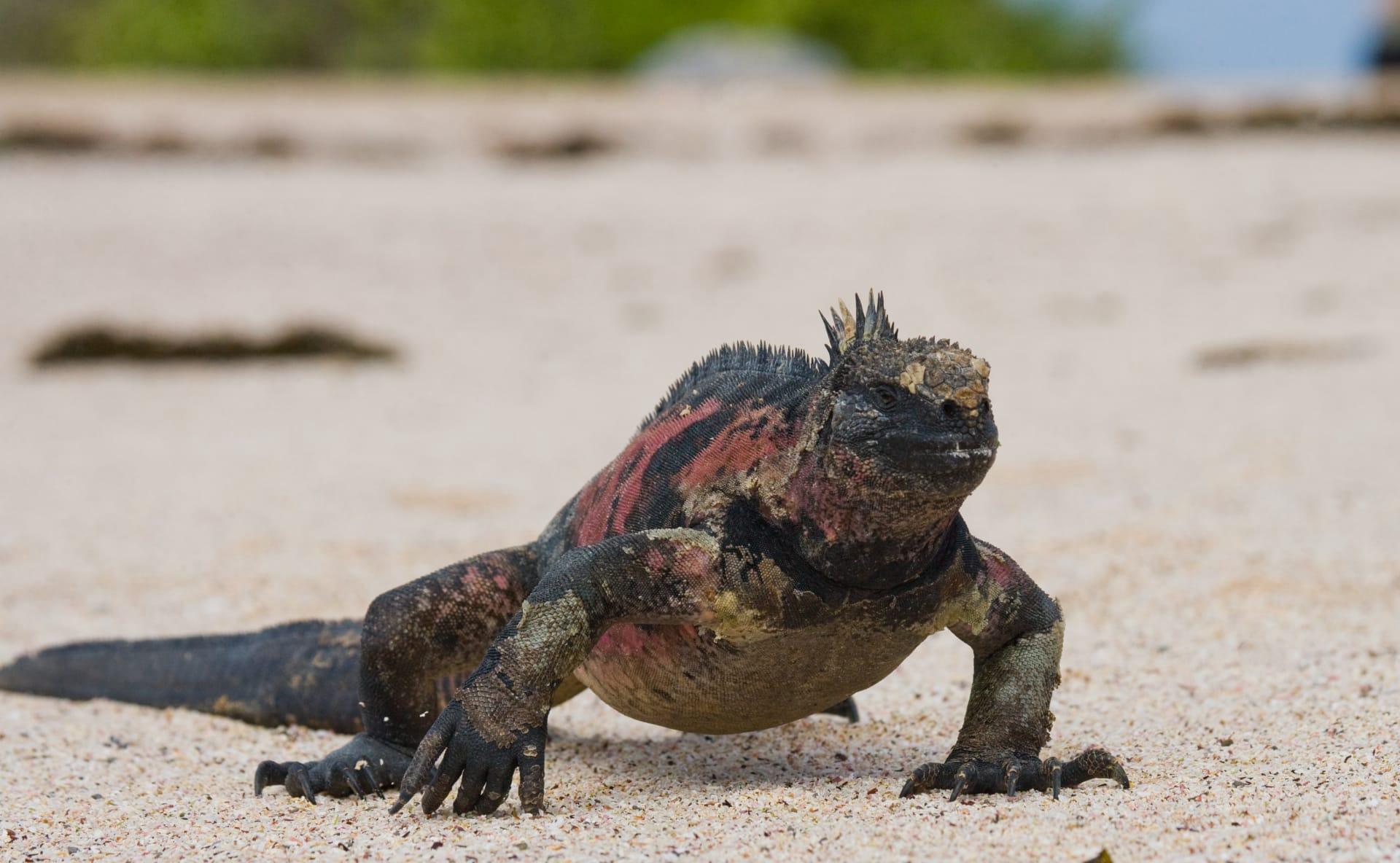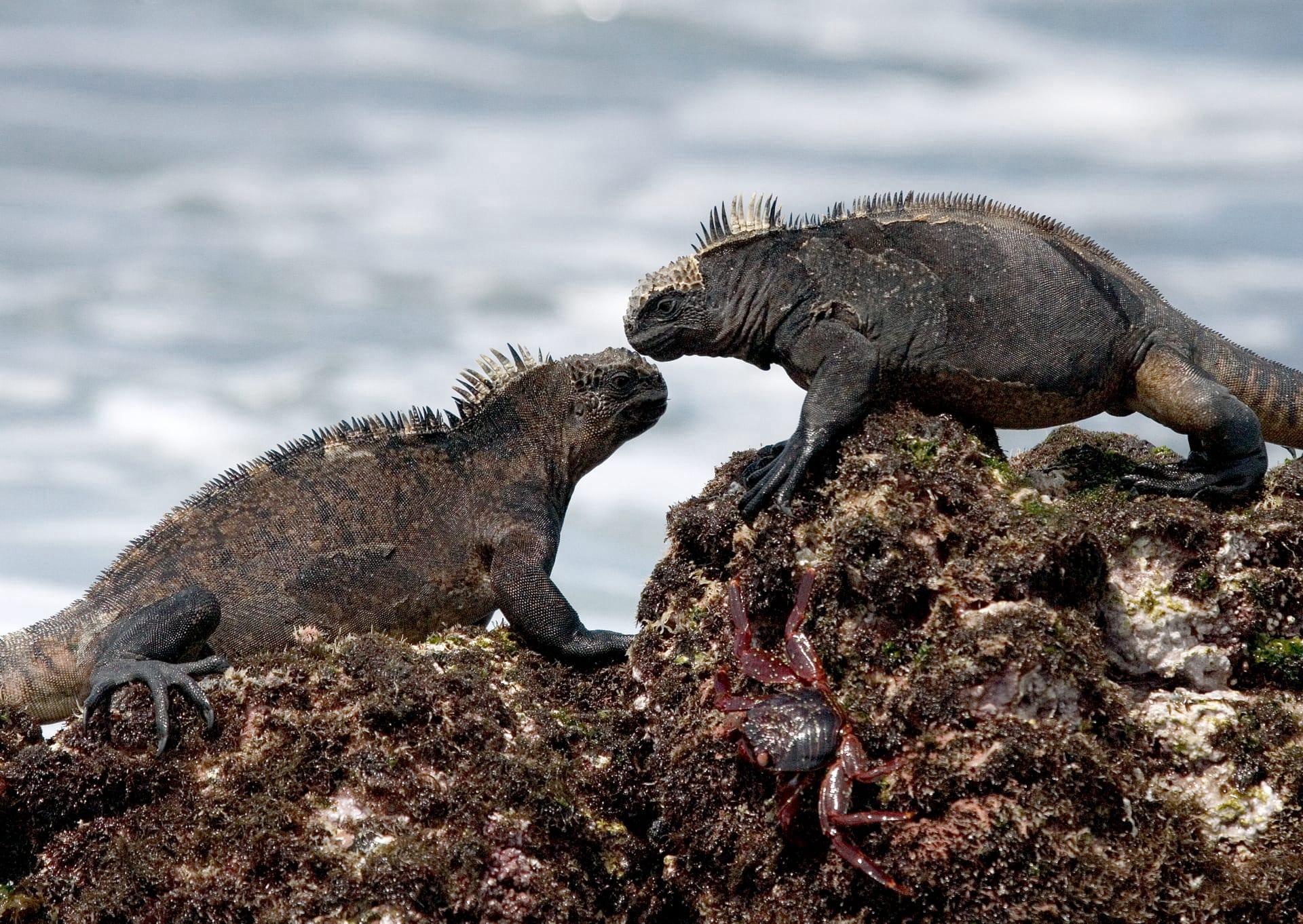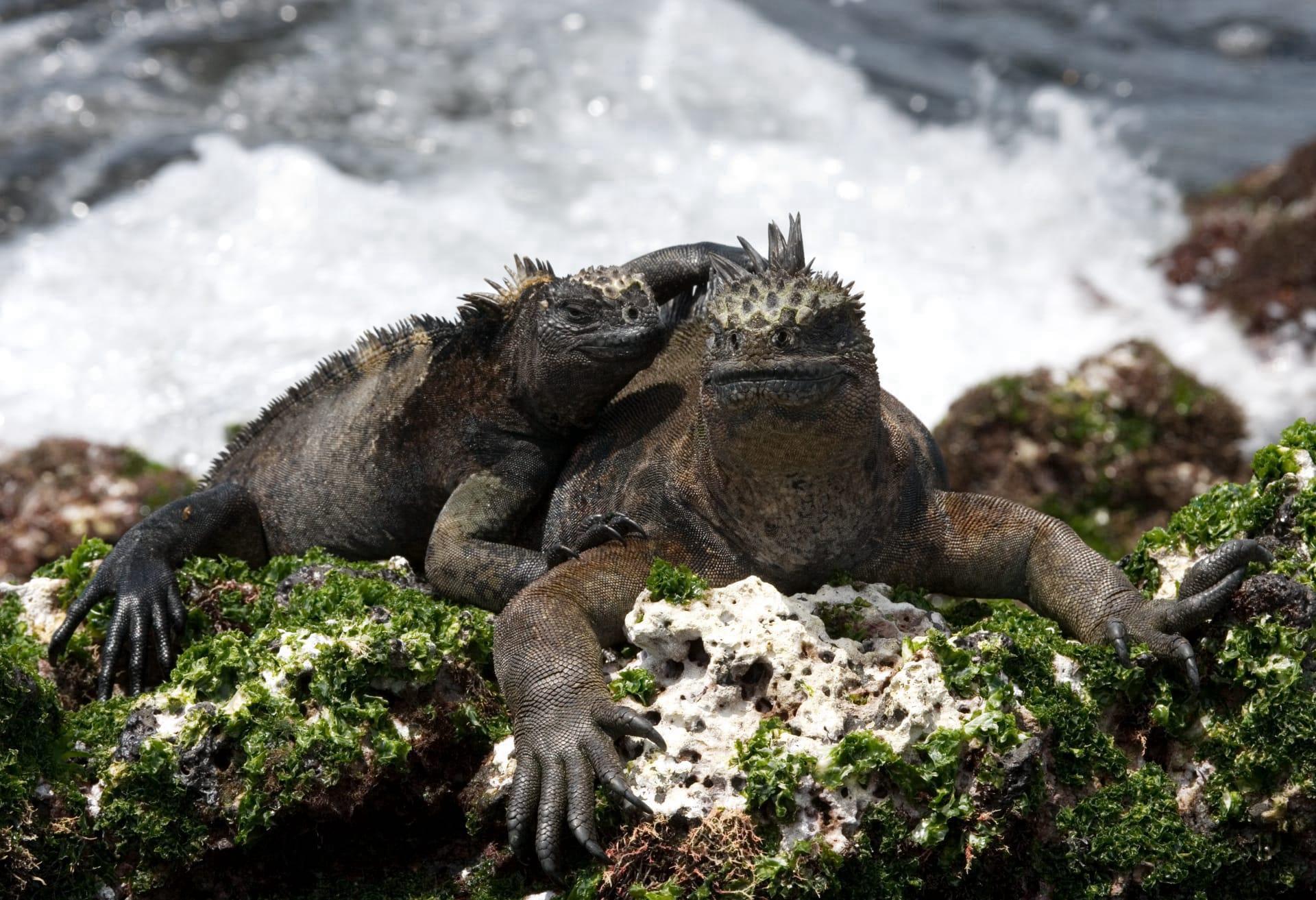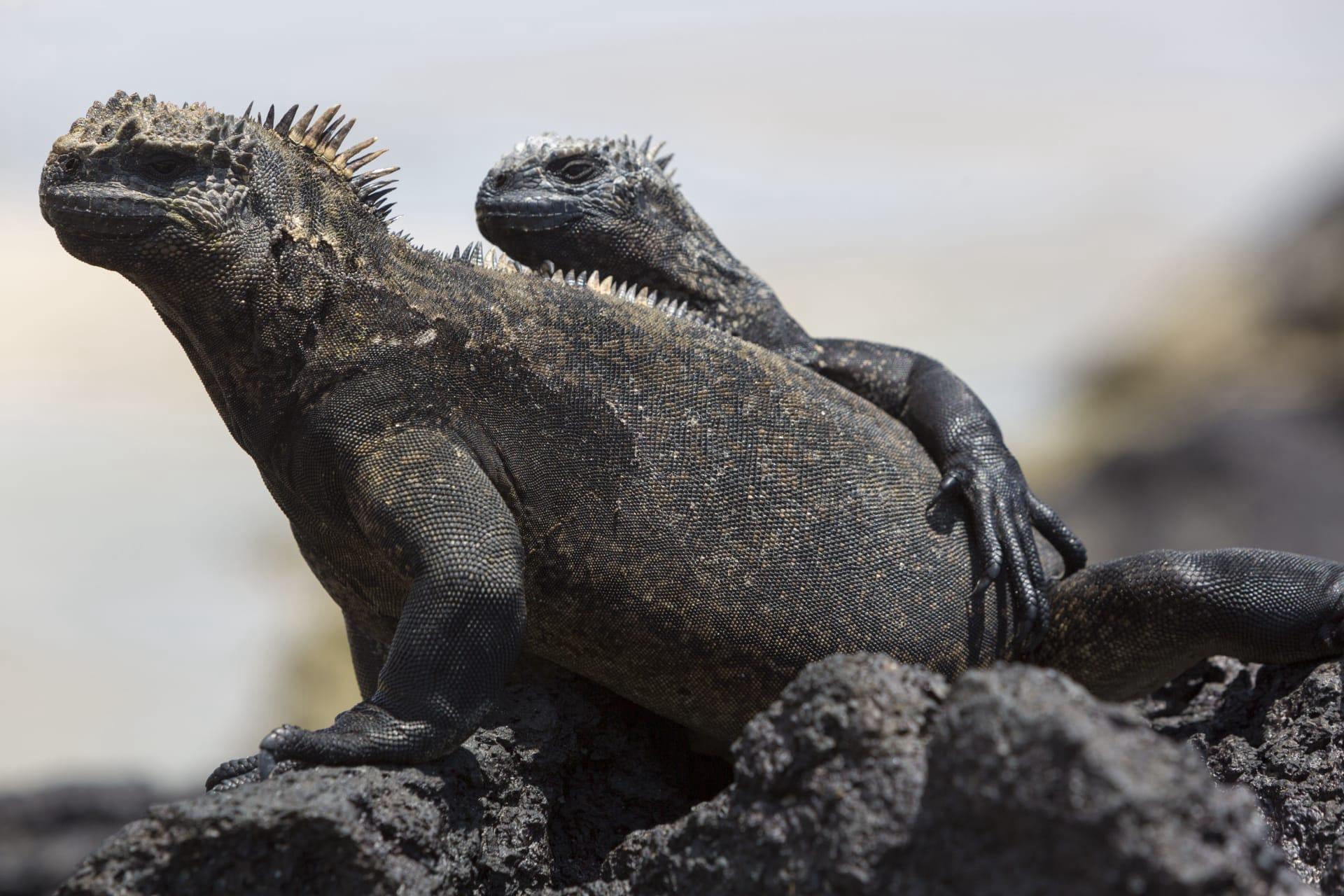Galapagos Iguana Characteristics
- Home /
- Mini Encyclopedia /
- Animal /
- Galapagos Iguana Characteristics
1
The Galapagos Iguana, a unique species found only in the Galapagos Islands, is a remarkable creature with distinct physical characteristics. Adult iguanas typically measure around 5 feet (1.5 meters) in length, and they can weigh up to 13 pounds (6 kilograms). Their lifespan is quite impressive, with some living up to 60 years. They possess stout, muscular bodies covered in tough, scaly skin which provides protection from the harsh sun and predators. Their coloration varies from a dark grey to black, helping them absorb heat from the sun efficiently.
One of the most exceptional organs of the Galapagos Iguana is its salt gland. Unique among lizards, this gland is located near their nostrils and plays a critical role in their survival. The iguana's diet consists largely of marine algae, which contains a high amount of salt. This gland helps them excrete excess salt from their bodies, which they ingest while feeding. The salt is expelled in a concentrated form, often seen as a white residue around their nostrils, preventing dehydration and maintaining a healthy balance of body fluids.

2
Question: How does the Galapagos Iguana adapt to its aquatic environment?
Answer: The Galapagos Iguana exhibits remarkable adaptations that allow it to thrive in its aquatic environment. One of the key adaptations is its ability to swim. These iguanas have developed strong, muscular legs and long, flattened tails that aid in efficient swimming. Their claws are sharp and long, perfect for gripping onto slippery rocks and underwater vegetation. Additionally, they have a specialized flattened snout that enables them to feed on algae growing on rocks underwater. Their lungs are also adapted to allow them to hold their breath for extended periods, sometimes up to an hour, while they dive and forage for food.

3
The locomotion of the Galapagos Iguana is quite unique. On land, they move with a lumbering gait, using their sturdy limbs to navigate the rocky terrain of the islands. However, in water, they transform into graceful swimmers. Their long tails act like rudders, propelling them through the water with ease. This dual capability allows them to access food sources both on land and in the ocean, a key aspect of their survival strategy.
As for their feeding habits, Galapagos Iguanas are primarily herbivorous. They have a special fondness for marine algae, which forms the bulk of their diet. These iguanas have been observed scraping algae off rocks both above and below the water's surface. Their strong jaws and sharp teeth are perfectly adapted for this task. On some occasions, they might also feed on fallen fruits and flowers, but such instances are rare.

4
The Galapagos Iguana's habitat is as unique as the creature itself. They are found exclusively on the Galapagos Islands, a volcanic archipelago in the Pacific Ocean. This environment is characterized by rocky shores, sparse vegetation, and a relatively dry climate. These iguanas are adapted to thrive in this challenging environment, utilizing the sun for thermoregulation and the sea for food.
In terms of reproduction, Galapagos Iguanas exhibit fascinating behaviors. Mating season usually occurs during the cooler times of the year. Males become territorial and perform elaborate rituals to attract females. Females, after mating, lay their eggs in burrows dug into the ground. The number of eggs varies, but on average, they lay between 2 to 20 eggs. The eggs hatch after approximately 90 days, and the young iguanas are completely independent from birth, ready to face the challenges of their unique habitat.

5
Book: "The Dragons of Eden" by Carl Sagan, published in 1977 in the United States. This book delves into the evolution of human intelligence, with a fascinating segment on the Galapagos Iguanas. Sagan eloquently describes their unique adaptations and behaviors, linking them to broader concepts of evolution and survival.
Book: "Lonesome George: The Life and Loves of a Conservation Icon" by Henry Nicholls, published in 2006 in the United Kingdom. This book focuses on the story of Lonesome George, the last known individual of the Pinta Island tortoise, a species from the same ecosystem as the Galapagos Iguana. Nicholls uses George's story as a springboard to explore various conservation issues, including the challenges faced by the Galapagos Iguanas.